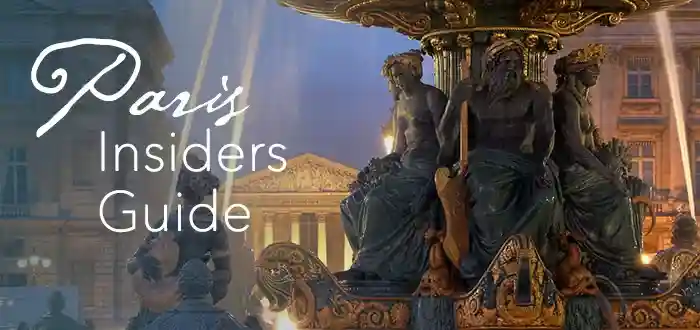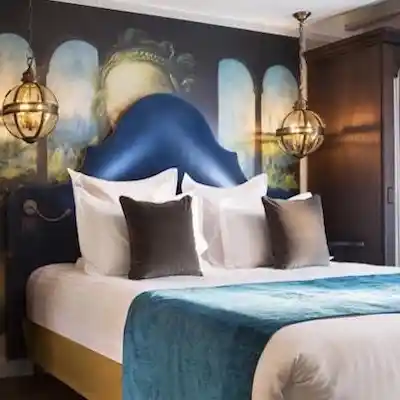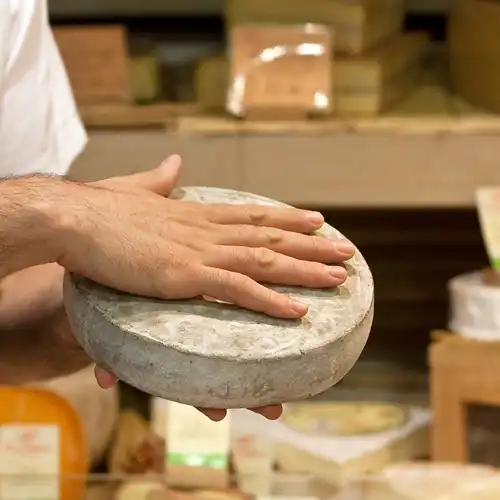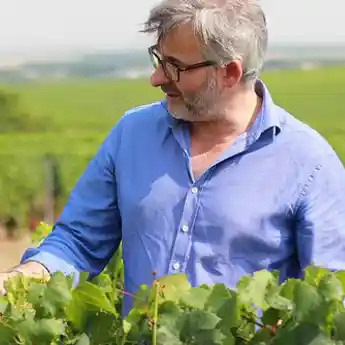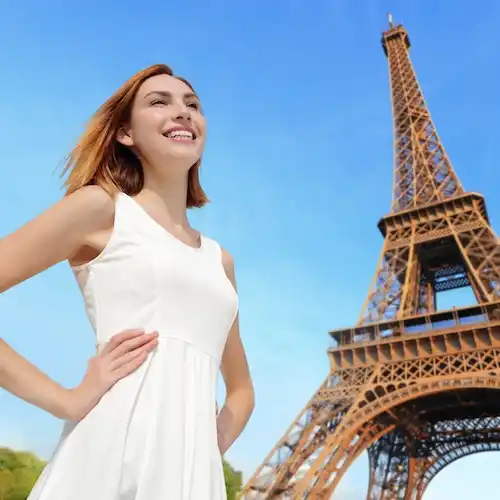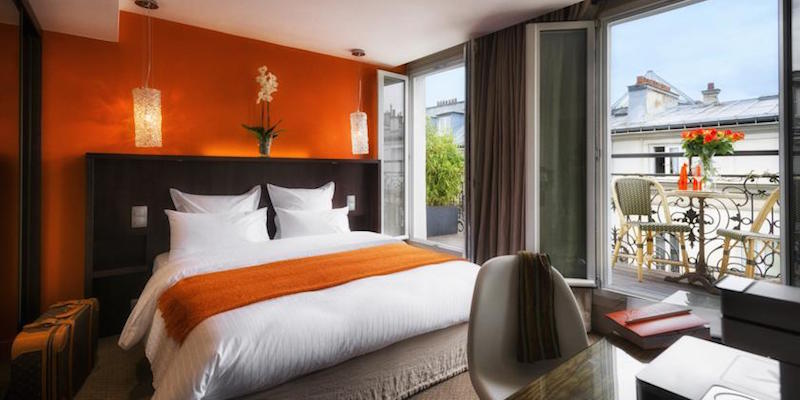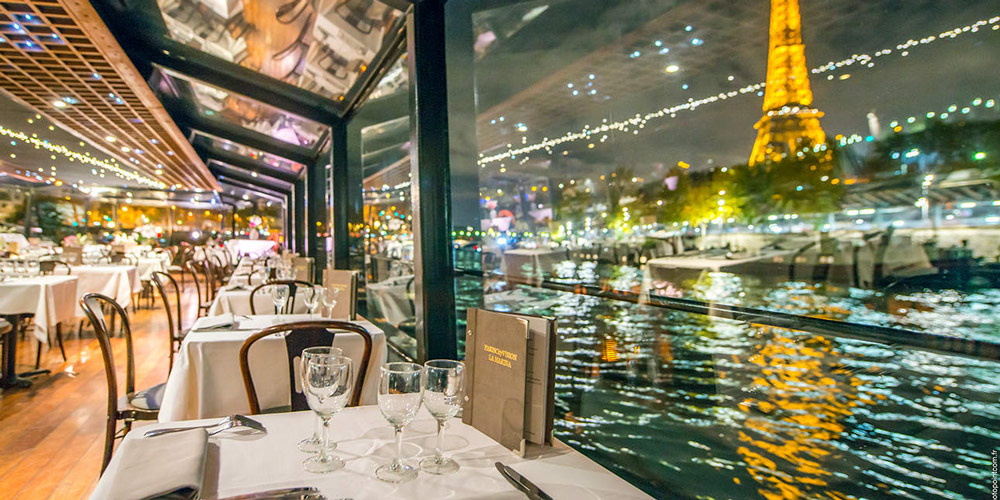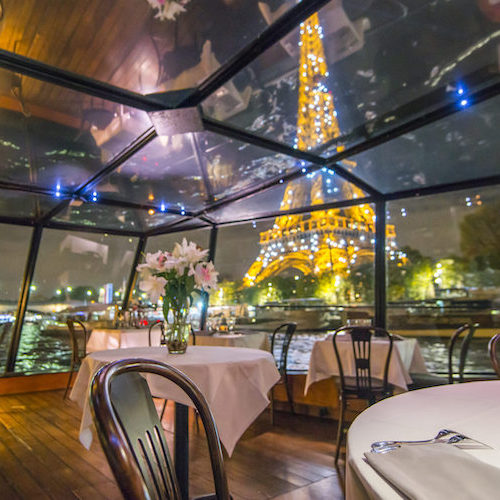Paris Arrondissements – A Guide to the City's Spiraling Heart
The twenty Paris arrondissements spiral out from the city center like a very confident pastry. Numbered clockwise from the 1st, they aren't just geographical zones — each one comes with its own town hall, mayor, and mild identity crisis. If you can crack the spiral, you're halfway to feeling like a local.
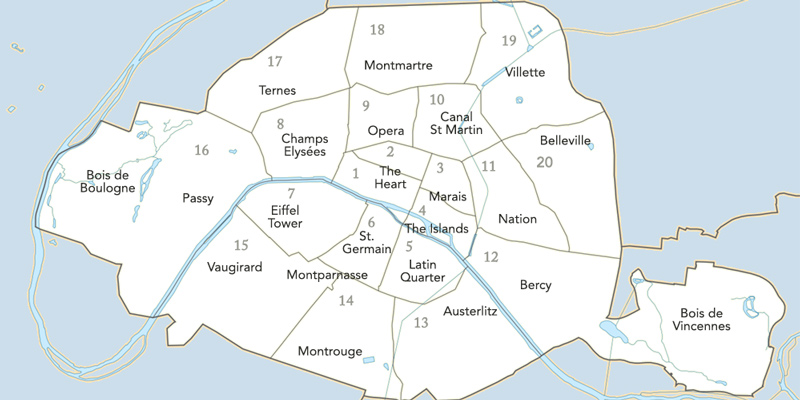 Map of the Paris Arrondissements, Wikimedia by Eric Gaba & Mark Craft
Map of the Paris Arrondissements, Wikimedia by Eric Gaba & Mark Craft
This guide helps you decode the numbers, make smarter hotel picks, and maybe even impress your waiter. It's also a crash course in finding the best areas to stay in Paris and the how to spot the oddball things to do in Paris neighborhoods that most visitors miss. Keep an eye on those arrondissement numbers — they're not just for mail.
![]()
|
Browse our hand-picked Paris hotel deals with real-time discounts of up to 20%. Stay in the Marais, Saint Germain, the Latin Quarter, the Left Bank near the Eiffel Tower… every arrondissement is on the list. |
|
Browse our hand-picked Paris hotel deals with real-time discounts of up to 20%. Stay in the Marais, Saint Germain, the Latin Quarter, the Left Bank near the Eiffel Tower… every arrondissement is on the list. |
Where to Stay in Paris
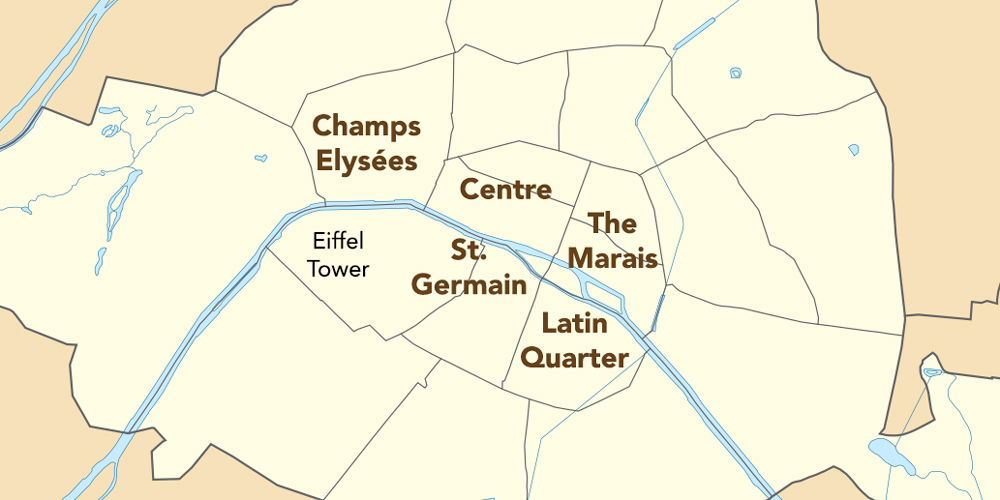 Paris map showing some of our favorite neighborhoods to call home
Paris map showing some of our favorite neighborhoods to call home
The City of Light is equally La Ville des Quartiers — the city of neighborhoods. Paris is made up of so many charming districts, each with delightful hotels, that it might be hard for the visitor to choose where to stay and which hotel to book. That's where where our curated Guide to Where to Stay in Paris comes in handy. We share the five best neighborhoods for the visitor to call home and pick out the top-rated hotels in each one. Bon voyage and bon séjour.
1st & 2nd Arrondissements – The Heart of Paris
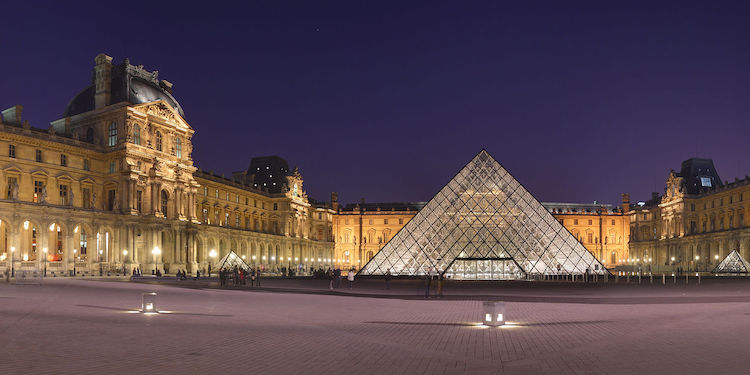 Courtyard of the Louvre Museum, 1st Arrondissement, photo Wikimedia by Benh Lieu Song
Courtyard of the Louvre Museum, 1st Arrondissement, photo Wikimedia by Benh Lieu Song
The 1st arrondissement is where Paris puts on its crown. Home to the Louvre Museum, Jardin des Tuileries, and the Palais Royal, it's regal, walkable, and surprisingly serene beyond the tourist centers. It's also a fine choice for visitors looking for the best areas to stay in Paris with easy access to landmarks, river walks, and cafes that take their espresso seriously.
Just to the north, the 2nd arrondissement is a compact tangle of narrow streets, historic arcades, and hidden gems. It's often overlooked, which works in your favor. Here, the vibe shifts from grand boulevards to market stalls and wine bars. Add it to your Paris neighborhoods guide if you're after charm without the fanfare—and a few quirky things to do in Paris neighborhoods without elbowing through crowds.
The 3rd & 4th Arrondissements – The Marais
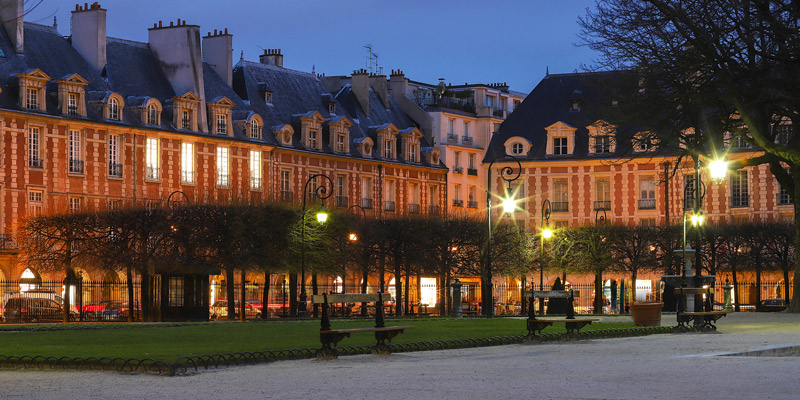 Place des Vosges, 4th Arrondissement
Place des Vosges, 4th Arrondissement
Cross the Seine and you're in the land of thinkers, revolutionaries, and people who correct your French. The Marais spreads across both the 3rd and 4th arrondissements, and it's where Paris lets its contradictions shine. You've got medieval lanes and mansions turned into museums, falafel shops next to fashion ateliers, and a mix of old money and new trends all elbowing for elbow room.
The 3rd tends to be quieter, a bit more residential, while the 4th is livelier and home to landmarks like Hotel de Ville and Centre Pompidou. This is one of the best areas to stay in Paris if you like your mornings with café crème and people-watching, and your evenings with wine and whimsy. Put it on your Paris checklist — just don't expect to see it all in one stroll.
The Top Activities in the 1st to 4th Arrondissements
1st Arrondissements – Masterpieces of the Louvre Tour
Île de la Cité
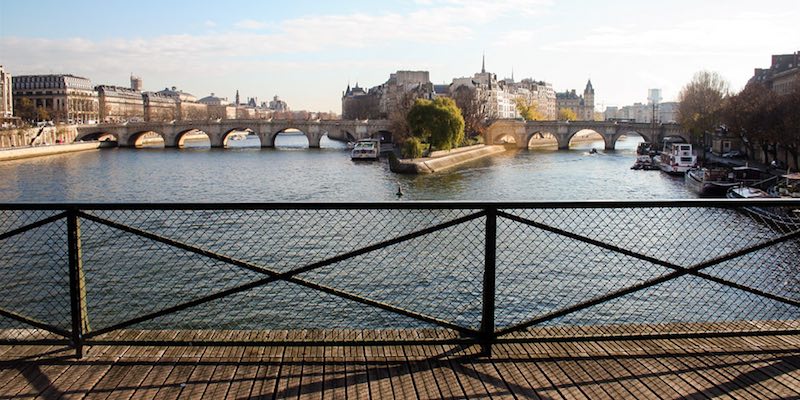 Île de la Cité from Ponts des Arts, photo by Mark Craft
Île de la Cité from Ponts des Arts, photo by Mark Craft
Île de la Cité floats in the Seine like the city's ancient heart. Here you find Notre-Dame Cathedral, La Sainte-Chapelle, and the sort of historic gravitas that you expect from a city with 2,000 years of history. It's compact but layered, and walking it feels like paging through a two-millennium-old scrapbook.
If you're looking for underrated things to do in Paris or simply want to feel like a 16th-century saint or a 19th-century poet, this is the spot. Île de la Cité deserves a pin on your map of must-visit Paris places.
Île Saint-Louis – Paris' Best-Kept Secret
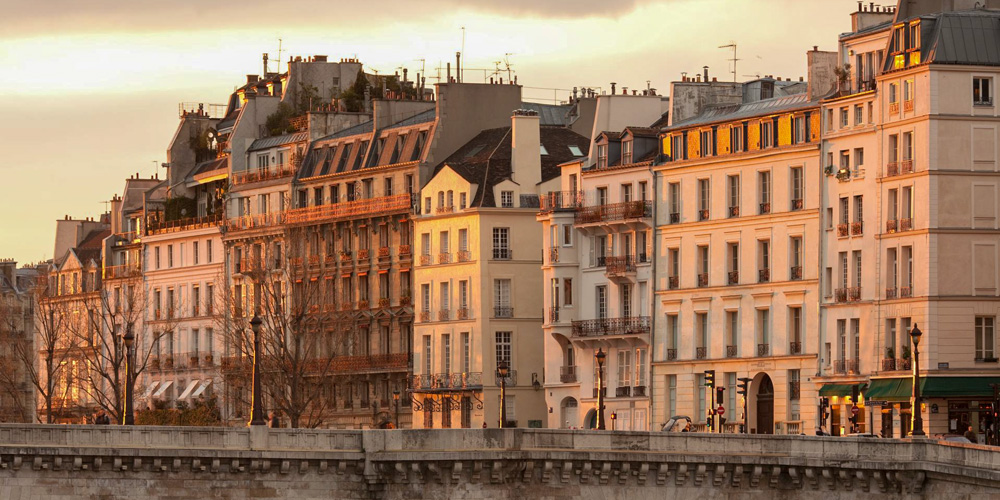 Buildings of Île Saint-Louis Paris line Quai de Bethune, photo Hotel de Lutece
Buildings of Île Saint-Louis Paris line Quai de Bethune, photo Hotel de Lutece
If Paris had a pause button, this would be it. Île Saint-Louis doesn't compete for attention — it doesn't need to. With its perfect facades, old-school cafes, quiet squares, and stone quays made for sitting and sighing, this island rewards slow walkers and people who know how to daydream properly.
It's not big, but it's rich in the good stuff: history, character, and cheese shops. We've walked the length of it (many times, just to be sure) and rounded up everything you need to know — from Berthillon ice cream to the best hidden benches. Here's how to enjoy it like someone who's been coming for years.
The 5th Arrondissement – The Latin Quarter
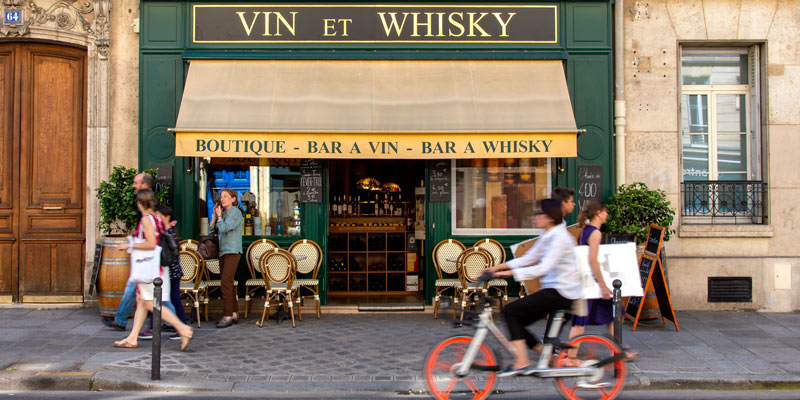 A cyclist rides by a wine and whisky bar in the Latin Quarter, photo by Mark Craft
A cyclist rides by a wine and whisky bar in the Latin Quarter, photo by Mark Craft
Welcome to the student-packed, book-heavy, slightly chaotic wonderland of the Latin Quarter. The 5th arrondissement is one of the oldest parts of Paris and home to the Sorbonne, the Pantheon, and more sidewalk philosophers than you thought still existed. Streets twist around Roman ruins, with creaky bookshops tucked between crêperies and corner cafes.
It may not be the calmest place to stay, but it is the most alive. If your idea of fun includes sitting for hours over a carafe of wine, this might be your Paris. Spend some time in the 5th if you're looking for history, energy, and a few unexpected things to do in Paris neighborhoods that still feel lived-in.
The 6th Arrondissement – St-Germain-des-Prés
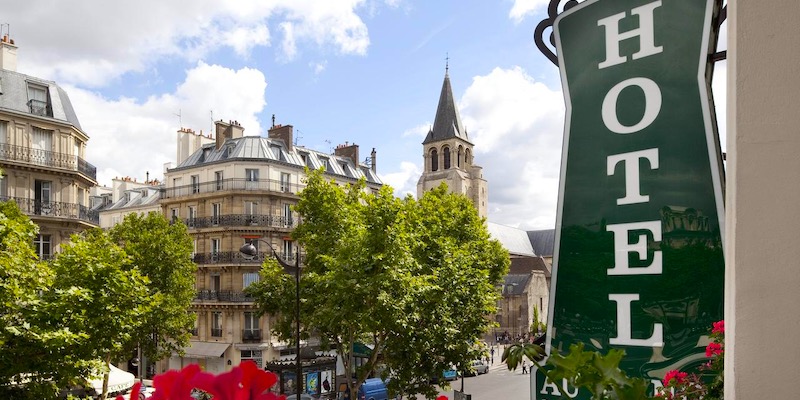 Saint-Germain-des-Prés, 6th Arrondissement
Saint-Germain-des-Prés, 6th Arrondissement
The 6th arrondissement wears its cultural legacy well — this is St-Germain-des-Prés, where existentialists once held court and cafes still serve ideas with their espresso. Think Left Bank charm with a polished edge — art galleries, independent bookstores, and enough history to make a walking tour feel like a literary salon.
It's one of the best areas to stay in Paris if you like your neighborhoods steeped in atmosphere. The Jardin du Luxembourg is nearby for lounging, and the boutiques lean more toward refined than flashy. This is where you add a scarf and suddenly feel like writing a novel. Find a slot for it in your things to do in Paris Rolodex to revel in a touch of old-school cool.
What to do in Saint-Germain & the Latin Quarter
Paradis Latin in the Latin Quarter
The 7th Arrondissement – Eiffel Tower Views
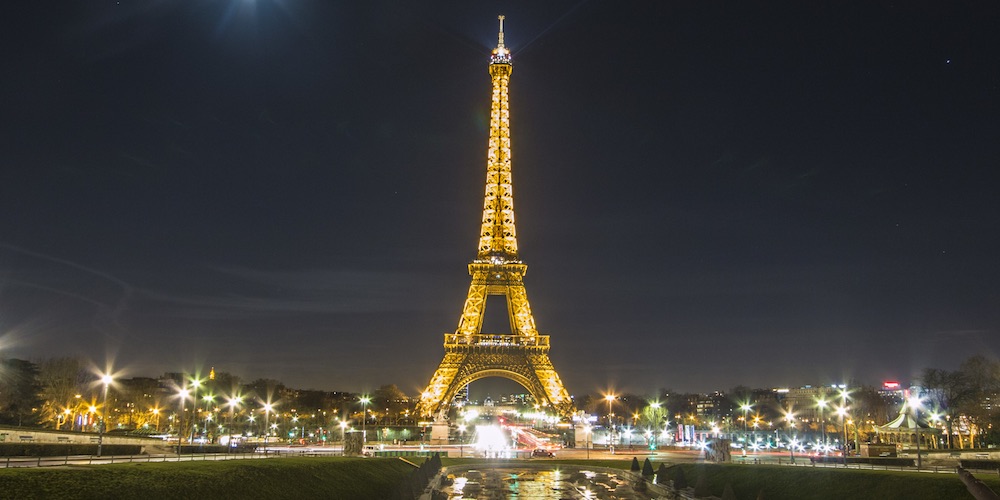 The 7th Arrondissement's most ionic sight
The 7th Arrondissement's most ionic sight
Cue the Paris postcard views. The 7th arrondissement is home to the Eiffel Tower, the Musée d'Orsay, and Les Invalides, and is a district that knows its worth. The streets are bustling, the buildings are elegant, and the tourist count spikes every time the tower sparkles. But don't be fooled — there's more to this neighborhood than Instagram shots.
Step away from the crowds and you'll find quiet residential lanes, excellent open-air markets, and one of the best areas to stay in Paris if you want museum-hopping by day and peaceful dinners by night. It's also a smart addition to any Paris neighborhoods guide thanks to its balance of grandeur and day-to-day livability. And yes, the views really are that good.
The 8th Arrondissement – The Grand Boulevards
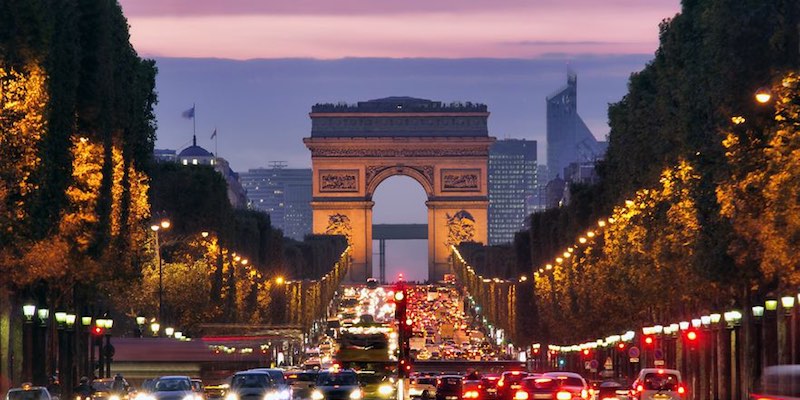 Arc de Triomphe, at the end of Champs-Elysées, 8th Arrondissement
Arc de Triomphe, at the end of Champs-Elysées, 8th Arrondissement
If the 7th is all elegance and poise, the 8th is its flashier cousin in designer sunglasses. This is where you'll find the Champs-Elysées stretching its perfectly manicured lanes toward the Arc de Triomphe, with luxury boutiques, gilded buildings, and power lunches all part of the daily routine. If you have a comfortable bank account and a taste for the good things in life — luxury hotels, great museums, and chi-chi shopping — this is where you should be.
But the 8th isn't just showbiz — it's also home to Parc Monceau and quieter pockets that soften the sparkle. If you're eyeing the best areas to stay in Paris with a bit of dazzle (and don't mind a price tag to match), this one's worth your attention. Keep it on your map of Paris arrondissements for moments when you feel like splurging — or just pretending.
The Eiffel Tower & The 7th Arrondissement
Skip the Eiffel Lines!
The 9th Arrondissement – Opéra
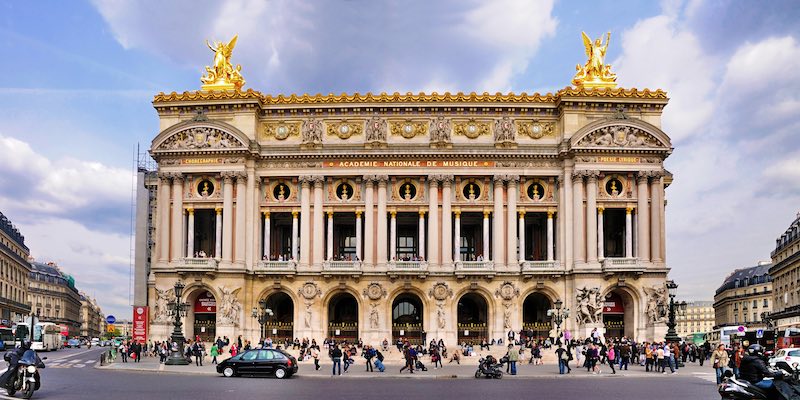 Palais Garnier at Place de la Opéra, 9th Arrondissement
Palais Garnier at Place de la Opéra, 9th Arrondissement
If Paris were a stage production, the 9th arrondissement would be somewhere between the spotlight and backstage. Home to the grand Palais Garnier and elegant boulevards, this area knows how to put on a show — sometimes literally. It's also where you'll find department stores that double as cathedrals of commerce, and cafes that never quite empty.
But wander a few blocks off the main drag and you'll stumble on a different vibe — boutique hotels, wine bars, and a new wave of restaurants that are quietly redefining French dining. If you're checking off things to do in Paris neighborhoods with both style and substance, the 9th deserves more than a passing glance.
10th Arrondissement – Canal Life
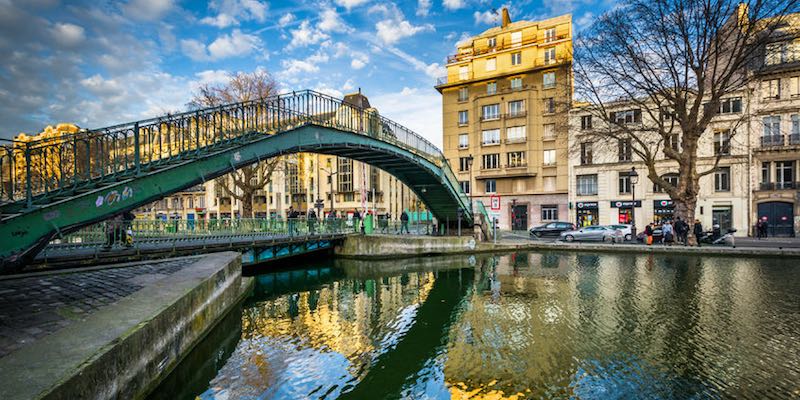 Canal Saint-Martin, 10 & 11th Arrondissements
Canal Saint-Martin, 10 & 11th Arrondissements
The 10th arrondissement leans a little more relaxed, especially along Canal Saint-Martin. Once a working waterway, now a hipster haven, the canal draws locals and visitors alike with iron footbridges, picnic spots, and cafes that do brisk business in organic everything.
Away from the water, the 10th bustles with markets, multicultural eateries, and streets that feel more neighborhood than museum. If your Paris things to do checklist needs a spot that's less polished but more personal, the 10th earns its place. There's no Eiffel Tower view, but you get people-watching for days — and some of the best bread in town.
Arrondissement Adventures: The Latin Quarter to Montmartre
Montmartre Food Adventure
11th Arrondissement – Local Life Unfiltered
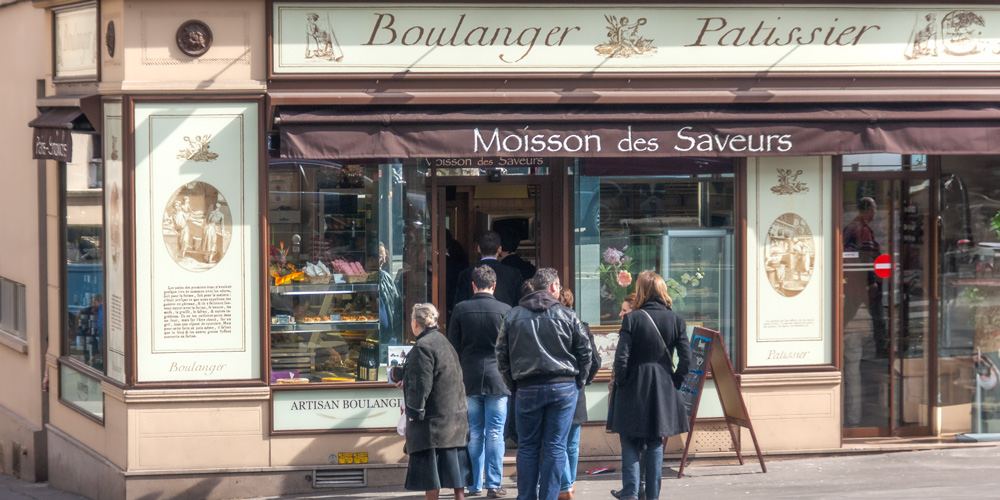 Moisson des Saveurs boulangerie in the 11th, photo by Mark Craft
Moisson des Saveurs boulangerie in the 11th, photo by Mark Craft
The 11th arrondissement doesn't polish itself up for tourists — and that's half the charm. This is Paris with the volume up: cafes that spill into the street, bistros that stay open late, and pockets of creativity bubbling between Belleville and Père Lachaise. It's young, it's restless, and it's got a nightlife scene that never quite clocks out.
If you're hunting for bars that don't take reservations and restaurants where today's prix fixe might be gone by tonight, you're going to want to visit the 11th. It's not everyone's idea of the best area to stay in Paris, but it might be yours if your idea of "authentic" involves aperitifs, vintage shops, and a complete disregard for bedtime. Bonus: the people-watching is excellent.
12th Arrondissement – Green & Growing
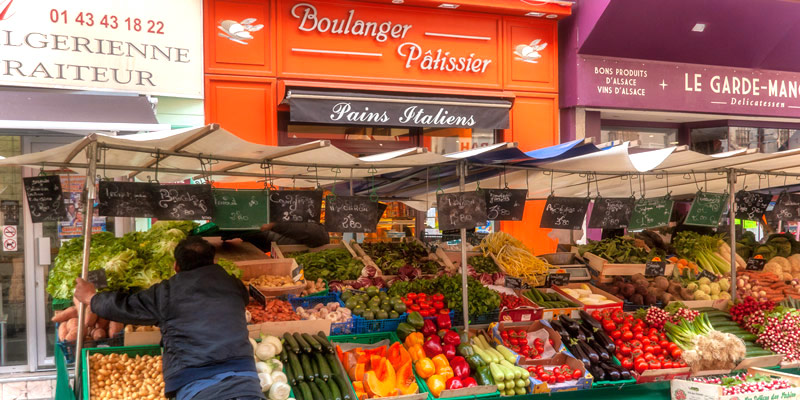 Aligre Market, 12th Arrondissement, photo by Mark Craft
Aligre Market, 12th Arrondissement, photo by Mark Craft
This is a Paris neighborhood that doesn't make a fuss — the 12th just quietly gets on with being one of the most livable corners of Paris. Home to the vast Bois de Vincennes, this district offers a literal breath of fresh air along with long bike paths, a zoo, and picnic-worthy stretches of green. It's where Paris goes to stretch out. The 12th is full of things we really like — the modernistic Opera Bastille; the Aligre market; Gare de Lyon, the loveliest train station in Paris.
But the 12th isn't just trees and joggers. The modern promenade of the Coulée Verte (Paris's original elevated park) snakes through former rail lines, and Bercy Village mixes old wine warehouses with shops and cinema. Add the 12th to your mental map of Paris arrondissements for its balance of space and spirit — and if you're after things to do in Paris neighborhoods that don't come with a crowd, it's a solid bet.
![]()
|
Paris Dinner Cruises on the Seine Dine in style as you glide past the Eiffel Tower, Notre-Dame, and the Louvre on a magical Seine River cruise. Gourmet food, champagne, and Paris lit up at night – it’s unforgettable. |
|
Paris Dinner Cruises on the Seine Dine in style as you glide past the Eiffel Tower, Notre-Dame, and the Louvre on a magical Seine River cruise. Gourmet food, champagne, and Paris lit up at night – it’s unforgettable. |
The 13th Arrondissement – Contemporary & Cultural
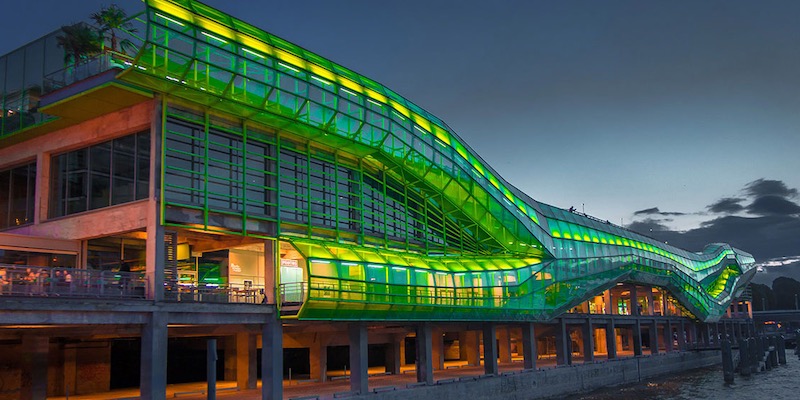 Cité de la Mode, 13th Arrondissement, photo Cité de la Mode
Cité de la Mode, 13th Arrondissement, photo Cité de la Mode
The 13th arrondissement often flies under the radar, which is exactly why it's worth your attention. It's home to the city's Asian Quarter, a growing street art scene, and modern landmarks like the Bibliothèque François Mitterrand and the neighboring new quartier of Paris Rive Gauche. The vibe? More dumplings and murals than berets and baguettes.
This part of the Left Bank has a lived-in energy and a reputation for reinvention. If you're after things to do in Paris neighborhoods that are less about selfies and more about what's next, this is your spot. If you like contrast — tradition and tower blocks, noodles and new ideas you're likely to love this quartier. It's not the Paris of postcards, but that's the point.
The 14th Arrondissement – Montparnasse & Memory
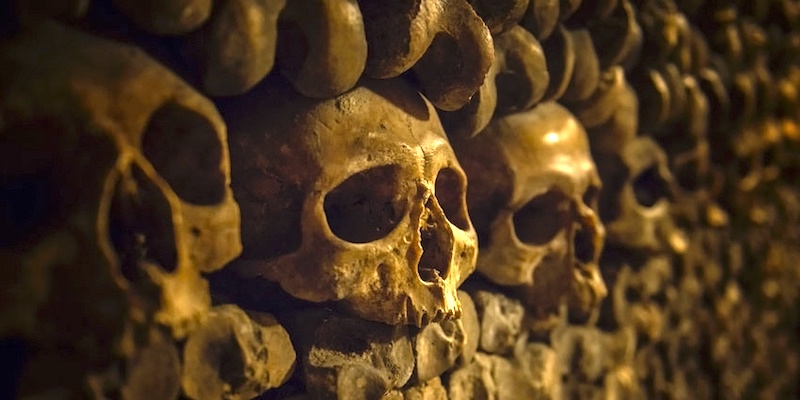 The Paris Catacombs, located in the 14th Arrondissement
The Paris Catacombs, located in the 14th Arrondissement
The ghosts of literary greats mingle with commuters on their way to the office: that's the 14th arrondissement. Montparnasse anchors this district — once a haven for artists and writers, now a mix of apartment, brasseries, and a train station with serious departure energy. And yes, the Catacombs of Paris lie beneath it all, adding a little macabre charm to the everyday.
It's a mostly residential arrondissement, with pockets of calm that feel like a local's secret. If you're after a slower pace but still want access to solid restaurants and easy transit, the 14th is worth a look. It's also a spot to mark on your map of Paris arrondissements if you're craving cafes without crowds and a touch of old-school Left Bank atmosphere.
The 15th Arrondissement – Quiet Confidence
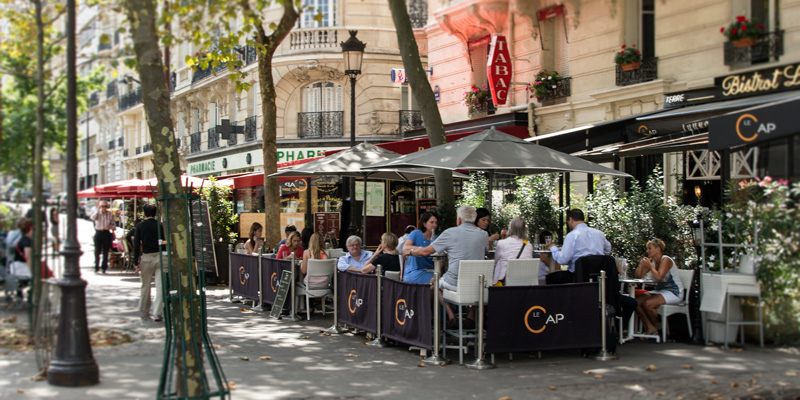 Lunching al fresco in the 15th Arrondissement, photo by Mark Craft
Lunching al fresco in the 15th Arrondissement, photo by Mark Craft
The 15th arrondissement doesn't clamor for attention — it just quietly keeps Paris moving. Tucked into the southwest, it's the city's most populous district (with 234,000 Parisians), full of residential streets, schools, and boulangeries that have lines out the door by 8 a.m. This is the Paris where people actually live, and where visitors can take a break from sightseeing without losing their sense of place.
It might not be at the top of everyone's Paris must-visit list, but the 15th offers some of the best areas to stay in Paris if you're after comfort, calm, and the occasional rooftop view. It's also home to parks (like Parc André Citroën), markets, and plenty of classic bistros. So, let's hop on Metro Line 8 or 12 and meet up in southwest Paris!
![]()
|
Trade Paris bustle for royal grandeur on a guided Versailles tour. Skip the lines, wander the gardens, and peek inside Marie Antoinette’s private estate. History never looked this good. |
|
Trade Paris bustle for royal grandeur on a guided Versailles tour. Skip the lines, wander the gardens, and peek inside Marie Antoinette’s private estate. History never looked this good. |
The 16th Arrondissement – Old Money & Open Space
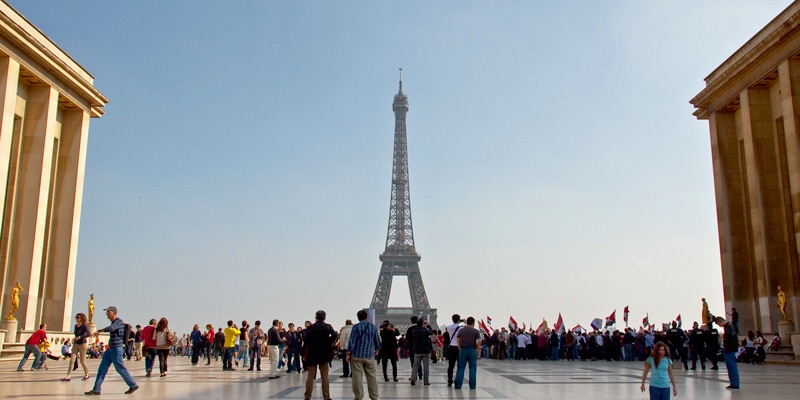 The view from Trocadero in the 16th Arrondissement, photo by Mark Craft
The view from Trocadero in the 16th Arrondissement, photo by Mark Craft
The 16th arrondissement feels like it's been ironed and starched. Wide boulevards, stately buildings, and embassies with very serious gates make this one of the most prestigious addresses in Paris. It's home to families, diplomats, and Parisians who like their croissants with a side of quiet. It's home to Musée Marmottan, where we go to to view the Monets; to luxury shopping and spectacular food markets; and to some of the most sought-after residential real estate in Paris. The plaza at Trocadero is a well-known and much-visited landmark found just across the Seine from the Eiffel Tower.
But there's also space — lots of it. Bois de Boulogne sprawls along the edge with gardens, lakes, and even a chateau. If you're scouting the best areas to stay in Paris for peace, greenery, and a bit of upscale detachment, the 16th fits the bill. Settle in a cafe here when you need a break from the buzz.
The 17th Arrondissement – Underrated Chic
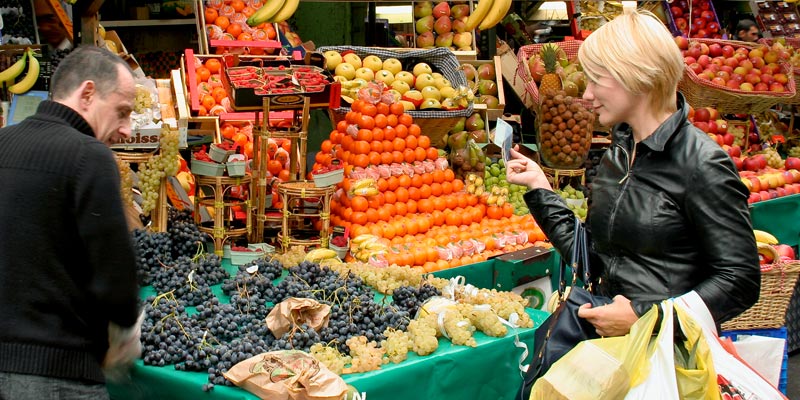 Poncelet market, 17th Arrondissement, photo by Mark Craft
Poncelet market, 17th Arrondissement, photo by Mark Craft
The 17th arrondissement doesn't shout for attention — which makes it all the more appealing. It's a mix of low-key affluence and village-like charm, with markets, quiet squares, and handsome Haussmannian façades. In its Batignolles quartier, you'll find a neighborhood-within-a-neighborhood vibe: stylish cafes, indie boutiques, and locals who look like they know their cheese.
It's one of those places to stay in Paris if you're after life without too many tourist frills. For its easy metro access and breezy confidence the 17th is a perfect Paris destination. There aren't many big-ticket attractions, but that's exactly why people who know it tend to love it.
![]()
|
Skip the long lines and dive into the Louvre’s greatest hits — the Mona Lisa, Venus de Milo, and more — on a guided tour that shows you the treasures without the museum overload. |
|
Skip the long lines and dive into the Louvre’s greatest hits — the Mona Lisa, Venus de Milo, and more — on a guided tour that shows you the treasures without the museum overload. |
The 18th Arrondissement – Hilltop & Heritage
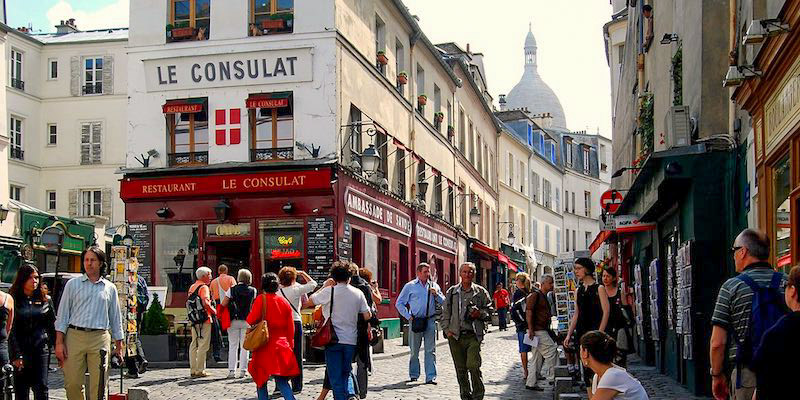 Streets of Montmartre village, 18th Arrondissement, photo Wikimedia by Albany Tim
Streets of Montmartre village, 18th Arrondissement, photo Wikimedia by Albany Tim
This is a quartier with a split personality — in the best possible way. Down below,it buzzes with markets and street life near Barbès and Château Rouge. Up on the hill of Montmartre? Cobbled lanes, Sacre Coeur, artists with easels — and yes, tourists with maps. But if you know where to wander, you'll still find quiet gardens, old staircases, and cafes where the past lingers in the corners.
It's not glittery like the Champs-Elysées,but that's part of the draw. Add the 18th to your Paris arrondissements guide if you're into charm with a bit of grit, and want things to do in Paris neighborhoods that aren't afraid to show a little soul.
The 19th Arrondissement – Music, Science & Parks
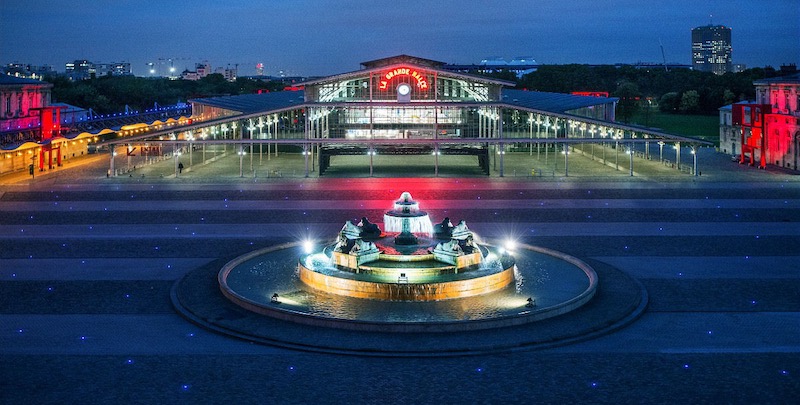 Night view of Parc de la Villette, 19th Arrondissement
Night view of Parc de la Villette, 19th Arrondissement
The 19th arrondissement is full of surprises — some quiet, some loud, and all of them a little off the main tourist radar. There's Parc de Buttes Chaumont, a dramatic, hilly green space with cliffs, grottos, and views that rival any rooftop terrace. Along the Canal de l'Ourcq, it's more urban picnic than postcard, with street art, skate parks, and impromptu concerts. But the huge destination is Parc de la Villette, a cluster of open spaces and museums including the Cité des Sciences, Cité de la Musique, and the spectacular Philharmonie de Paris, one of the world's great concert halls.
You'll want this on your Paris neighborhoods list if you want room to roam, mingle with actual Parisians, and spot creative energy in the wild. It's a ways out from the Louvre and the Eiffel Tower, but it's packed with things to do in Paris neighborhoods that still feel like they're figuring themselves out — in the best way.
The 20th Arrondissement – Belleville
 Pere Lachaise Cemetery, photo by Mark Craft
Pere Lachaise Cemetery, photo by Mark Craft
The 20th arrondissement is where Paris lets its cool show through the cracks. Grittier than its western cousins but bursting with personality, it's home to artists, activists, and longtime locals who aren't moving out anytime soon. If the city had a backstage pass, this would be it. It's a long, half-hour Metro ride from central Paris but worth visiting for the bustling community of Belleville.
You'll find street art, global eats, and Père Lachaise cemetery — the city's most poetic resting place — all in one arrondissement. It's not trying to charm you, which is exactly what makes it worth a visit. Add the 20th to your Paris arrondissements guide for things to do in Paris neighborhoods that feel real, vibrant, and just rough enough around the edges to stay interesting.
La Défense – Paris in a Business Suit
 La Grande Arche at La Défense, photo from Wikipedia, by Feydey
La Grande Arche at La Défense, photo from Wikipedia, by Feydey
Technically not an arrondissement, La Défense is Paris's skyscraper district, where the city swaps romance for rectangles. Located just beyond the 17th, it's a business hub filled with glass towers, major corporate headquarters, and an outdoor art gallery featuring giant sculptures that seem to be daring you to understand them.
It's not the first place you'd think about when you think about Paris, but it's fascinating in its own right. Come for the Grande Arche and a glimpse of futuristic Paris, stay for the clean sidewalks and shopping malls that feel like a different country altogether.
![]()
|
Browse our hand-picked Paris hotel deals with real-time discounts of up to 20%. Stay in the Marais, Saint Germain, the Latin Quarter, the Left Bank near the Eiffel Tower… every arrondissement is on the list. |
|
Browse our hand-picked Paris hotel deals with real-time discounts of up to 20%. Stay in the Marais, Saint Germain, the Latin Quarter, the Left Bank near the Eiffel Tower… every arrondissement is on the list. |
Paris Arrondissements – Then There Were 17
 Map of the Paris Arrondissements, Wikimedia by Eric Gaba & Mark Craft
Map of the Paris Arrondissements, Wikimedia by Eric Gaba & Mark Craft
As Paris grew from a small town centered on the islands, more municipal districts were required to administer the city. In the 1860s the city expanded in one giant gulp by incorporating nearby villages into the larger urban entity and creating the familiar twenty arrondissements.
And that's how Paris remained from 1860 until the summer of 2020 when the center of Paris — the four arrondissements with the smallest numbers (including the islands) — were amalgamated into a new administrative district called Paris Central, with the mairie of the 3rd Arrondissement becoming the town hall of the new district. While Paris now has only seventeen arrondissements, we continue to think of arrondissements one through four as separate "little cities" and write about them individually. (To us, Pluto's still a planet.)
As a visitor, you'll discover that the individual Paris arrondissements have their own feel and attractions. You may not make it to all the Paris arrondissements, but this guide should help you focus on the important places to see and things to do in each district. The map above shows the numbers of the Paris arrondissements as well as the names of the neighborhoods. Click on the map for a larger version.
Paris Arrondissements – Final Thoughts
 The mairie, or town hallo, of the 15th Arrondissement, photo by mark Craft
The mairie, or town hallo, of the 15th Arrondissement, photo by mark Craft
By now, you've probably realized the Paris arrondissements aren't just a way to organize mail delivery — they're a living, spiraling sketch of the city itself. Each one brings a different tempo, a different scent wafting from the boulangerie, a different tone of Parisian life. Some are best for first-timers, others for those who like their mornings with grit and their nights with champagne.
So yes, study the map of Paris arrondissements. But then crumple it up, put it in your pocket, and wander. This Paris neighborhoods guide can help you plan where to sleep, what to eat, and which metro stop to hop off at. The real magic? The in-between moments — when you turn a corner and suddenly you're once again struck by the depth of Paris.
Amazing Aspects of the Arrondissements of Paris
In 1860, under Napoleon III, Paris expanded its borders, incorporating nearby towns and villages such as Montmartre and Belleville, transforming the city into the 20 arrondissements we know today. Prior to this, Paris had only 12 arrondissements, arranged west to east. The new districts are numbered in a unique spiral pattern, beginning with the 1st Arrondissement in the city center, circling outward like a snail's shell.
The Marais, built over ancient marshlands, became the fashionable hub for the aristocracy from the 13th to 17th centuries, while the Latin Quarter takes its name from the university students who spoke Latin during the Middle Ages. This vibrant neighborhood is still famous for its Roman history and lively food markets.
Did you know the 12th arrondissement is the largest? Thanks to the Bois de Vincennes, it slightly edges out the 16th arrondissement by just a few acres. Montmartre, once a quaint village high on a hill, now forms the lively 18th arrondissement, drawing artists and visitors alike.
Paris' postal codes end in the arrondissement number, so the 1st is 75001, the 4th is 75004, and so on. Look closely, and you'll still spot old street names and arrondissement numbers carved into the sides of historic buildings, a daily reminder of Paris' evolution.
![]()
|
Browse our hand-picked Paris hotel deals with real-time discounts of up to 20%. Stay in the Marais, Saint Germain, the Latin Quarter, the Left Bank near the Eiffel Tower… every arrondissement is on the list. |
|
Browse our hand-picked Paris hotel deals with real-time discounts of up to 20%. Stay in the Marais, Saint Germain, the Latin Quarter, the Left Bank near the Eiffel Tower… every arrondissement is on the list. |
FAQs – Paris Arrondissements
WHAT ARE THE PARIS ARRONDISSEMENTS?
The Paris arrondissements are 20 administrative districts that spiral clockwise from the city center, numbered 1st through 20th. Each arrondissement has its own town hall, mayor, and distinct character. They were established in 1860 when Paris expanded its borders to incorporate nearby villages like Montmartre and Belleville.
WHICH PARIS ARRONDISSEMENTS ARE BEST FOR TOURISTS TO STAY IN?
The best arrondissements for tourists include the 1st (Louvre area), 3rd and 4th (Le Marais), 5th (Latin Quarter), 6th (Saint-Germain-des-Prés), and 7th (Eiffel Tower). These districts offer easy access to major landmarks, excellent restaurants, charming streets, and a mix of historic and cultural attractions.
HOW DO PARIS ARRONDISSEMENT NUMBERS WORK?
Paris arrondissements are numbered in a clockwise spiral starting from the 1st Arrondissement in the city center. The spiral moves outward like a snail shell. The arrondissement number also appears in postal codes — for example, the 1st is 75001, the 4th is 75004, and so on.

